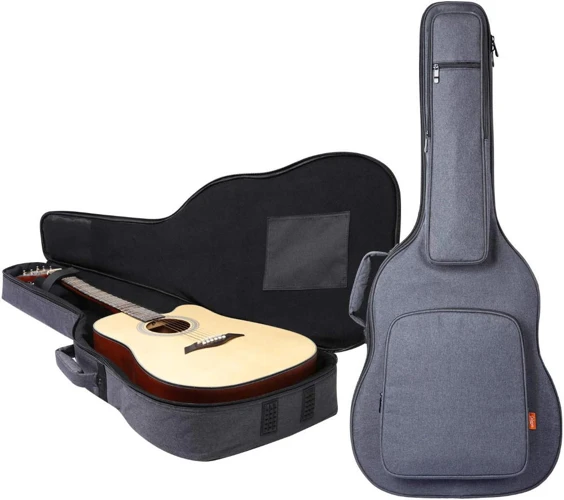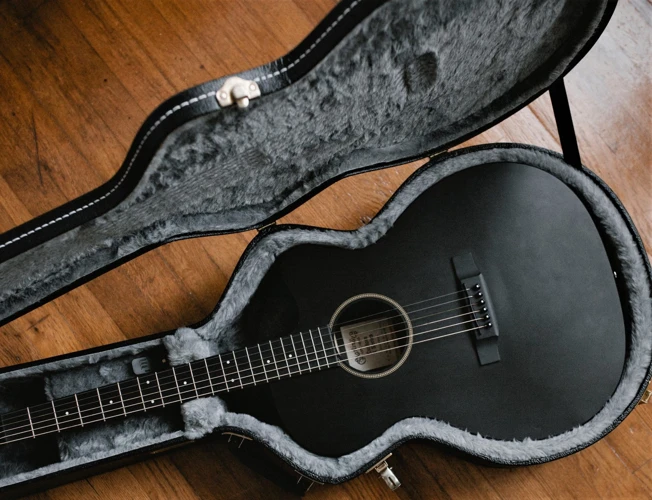Acoustic guitars are prized possessions for many musicians, and it’s essential to protect them during transport and storage. One of the best ways to safeguard your acoustic guitar is by investing in a high-quality guitar case. Not only do these cases offer protection from bumps, scratches, and environmental elements, but they also make it easier to carry your instrument around. In this article, we will explore the five best acoustic guitar cases on the market, highlighting their features, pros, and cons to help you make an informed decision.
1. Gator Cases Deluxe ABS Molded Acoustic Guitar Case
The Gator Cases Deluxe ABS Molded Acoustic Guitar Case is a top-of-the-line option for musicians looking for maximum protection for their acoustic guitar. This case features a durable ABS exterior that can withstand rough handling during travel. The interior is plush-lined to cradle your instrument and prevent it from shifting around inside the case. Additionally, the case has heavy-duty aluminum valances that provide extra reinforcement and security.
Pros:
– Tough ABS exterior for maximum protection
– Plush-lined interior to prevent scratches
– Heavy-duty aluminum valances for added durability
– Comfortable handle for easy carrying
– Locking latches for security
Cons:
– Slightly heavier than soft cases
– May be bulkier to store
2. SKB Acoustic Guitar Soft Case
For musicians who prefer a softer case without compromising on protection, the SKB Acoustic Guitar Soft Case is an excellent choice. This case is made from high-quality materials that offer a balance of durability and lightweight design. The exterior is water-resistant, making it suitable for outdoor performances or travel in unpredictable weather conditions. The interior is padded to cushion your guitar from impacts and shocks.
Pros:
– Lightweight and easy to carry
– Water-resistant exterior for added protection
– Padded interior to prevent damage
– Exterior pockets for accessories
– Adjustable shoulder straps for comfortable carrying
Cons:
– Less rigid compared to hard cases
– May not offer as much impact resistance
3. Mono M80 Acoustic Guitar Case
The Mono M80 Acoustic Guitar Case is known for its sleek design and innovative features that cater to the needs of modern musicians. This case combines the protection of a hard case with the flexibility of a gig bag, making it a versatile option for guitarists on the go. The exterior is made from military-grade materials that are both durable and lightweight. The case also features a unique top-loading design for easy access to your instrument.
Pros:
– Hybrid design for the best of both worlds
– Military-grade materials for durability
– Top-loading design for convenient access
– Padded straps for comfortable carrying
– Ergonomic handle for easy lifting
Cons:
– Higher price point
– Limited color options
4. Road Runner RRDWA Deluxe Wood Case
If you’re looking for a classic and elegant guitar case that doesn’t compromise on protection, the Road Runner RRDWA Deluxe Wood Case is a great option. This case features a wooden shell that provides a vintage look while offering top-notch security for your acoustic guitar. The interior is plush-lined to prevent scratches, and the case has a spacious accessory compartment for storing picks, strings, and other essentials.
Pros:
– Classic wooden shell for a timeless look
– Plush-lined interior for scratch prevention
– Spacious accessory compartment
– Sturdy latches for secure closure
– Comfortable handle for easy carrying
Cons:
– Heavier than some soft cases
– Wooden shell may be prone to scratches
5. Fender FA610 Dreadnought Acoustic Guitar Gig Bag
For musicians seeking a budget-friendly option without skimping on quality, the Fender FA610 Dreadnought Acoustic Guitar Gig Bag is an excellent choice. This gig bag offers adequate protection for your acoustic guitar while being lightweight and easy to transport. The exterior is made from water-resistant polyester that can withstand light rain and moisture. The interior is padded to cushion your instrument from bumps and knocks.
Pros:
– Affordable price point
– Water-resistant exterior for light protection
– Padded interior for shock absorption
– Comfortable backpack straps for hands-free carrying
– External pockets for storing accessories
Cons:
– Less rigid compared to hard cases
– Limited color options
Looking for more guitar-related content? Check out our articles on cleaning techniques for acoustic guitars, best acoustic solos by country bands, cleaning products for acoustic guitars, best harmonica sets, and must-have accessories for acoustic country players for more musical inspiration and tips!
Conclusion
In conclusion, investing in a high-quality acoustic guitar case is essential for protecting your instrument and ensuring its longevity. The five cases mentioned in this article cater to a range of preferences and budgets, offering varying levels of protection and convenience for musicians. Whether you opt for a heavy-duty hard case or a lightweight gig bag, choosing the right case will give you peace of mind knowing that your acoustic guitar is safe and secure. Consider your needs and priorities when selecting a guitar case to find the best option that suits your lifestyle and playing habits.


